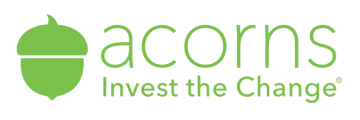Best IRAs 2025 Compare Retirement Plans
- Compare the best IRAs
- Learn more about investments
- Compare IRA rates and benefits
Find your stock broker

Since 2014, Financer has helped 432,714 people make better financial decisions.
Reviewed by 1 people
Reviewed by 2 people
Investing involves risk. Commission-free trading of stocks, ETFs and options refers to $0 commissions for Robinhood Financial self-directed individual cash or margin brokerage accounts that trade U.S. listed securities via mobile or web. Regulatory and exchange fees may apply. Please see Robinhood Financial Fee Schedule to learn more.
While we do our best to keep the data up to date, we can't guarantee the complete accuracy on a day-to-day
Are you ready to take control of your financial future? Choosing the right Individual Retirement Account (IRA) provider is a crucial step towards securing a comfortable retirement.
Based on our research and analysis, here are the top IRA providers for 2025:
Top IRA Providers of 2025
After extensive research and analysis, we've identified the following companies as the best IRA providers for 2025:
Best Overall: Fidelity Investments
Extensive investment selection
No minimum account balances
Zero fees for U.S.-listed stocks, ETFs, and options
Comprehensive educational resources
Best for Hands-On Investors: Charles Schwab
Wide range of investment options
Thousands of no-transaction-fee mutual funds
Robust trading platform
Excellent retirement planning tools
Best for Low-Cost Mutual Funds: Vanguard
Renowned for low-cost index funds
Offers robo-advisor services
Strong reputation in the investment community
Best for Advanced DIY Investors: Interactive Brokers
Extensive mutual fund selection
Advanced trading tools
User-friendly interface suitable for various skill levels
Best for Hands-Off Investors: Wealthfront
Top-rated robo-advisor
Low management fees
Professionally managed portfolios
Best for Flat-Fee Structure: Betterment
Transparent flat-fee pricing
No minimum balance requirement
Automated investment management
Comparison Chart: Top IRA Providers of 2025
To help you make an informed decision, we've compiled a detailed comparison of the top IRA providers.
This chart highlights key features, pros, and cons of each provider to assist you in choosing the best option for your retirement savings goals.
| Provider | Best For | Pros | Cons | Fees | Minimum Investment |
|---|---|---|---|---|---|
| Fidelity Investments | Active traders and those seeking wide investment options | Wide investment selection; Low fees; Comprehensive tools; Excellent customer service | Platform may be complex for beginners | $0 for stock/ETF trades; $0 for many mutual funds | $0 |
| Charles Schwab | Investors wanting active or passive management with educational resources | User-friendly platform; No transaction fees on many funds; Robo-advisor options; Extensive educational resources | Some transactions may incur fees | $0 for stock/ETF trades; $0 for Schwab mutual funds and select others | $0 |
| Vanguard | Experienced investors seeking low-cost funds and automated management | Low-cost mutual funds; Robo-advisor available; Wide selection of investments | Some funds have investment minimums | $0 for stock/ETF trades; $0 for Vanguard mutual funds | $0 for many funds; some require $1,000+ |
| Interactive Brokers | Advanced DIY investors | Ideal for active traders; Large mutual fund selection; User-friendly platform | May be too complex for beginners | $0 for stock/ETF trades; fees vary for mutual funds | $0 |
| Wealthfront | Investors wanting professionally managed portfolios at low cost | Low management fee; Automated rebalancing; Sophisticated goal-based planner | Additional ETF fees | 0.25% annual management fee + ETF fees | $500 |
| Betterment | Hands-off investors seeking low fees and comprehensive planning tools | Robo-advisor with ETF focus; Low fees; Advanced financial planning tools | Additional ETF fees | 0.25% annual fee (Digital); 0.40% (Premium) + ETF fees | $0 (Digital); $100,000 (Premium) |
How to Choose the Best IRA Provider
Selecting the right IRA provider involves considering several factors:
Factors to Consider When Choosing an IRA Provider
Investment Options: Consider the range of available investments and how they align with your strategy.
Fees: Look at both management fees and transaction costs, as these can significantly impact your returns over time.
User Experience: Choose a platform that matches your level of investing expertise and desired level of involvement.
Educational Resources: If you're new to investing, prioritize providers with robust educational materials.
Account Minimums: Ensure you can meet the minimum investment requirements, especially for specific funds.
Additional Services: Consider value-added features like financial planning tools or robo-advisor options.
Remember, the best IRA provider for you depends on your individual financial situation, investment goals, and preferences.
While this comparison provides a overview, it's always wise to conduct your own research and possibly consult with a financial advisor before making a decision.
What Is an IRA?
An Individual Retirement Account (IRA) is a powerful financial tool designed to help you save for retirement, often with significant tax advantages.
Unlike employer-sponsored 401(k) plans, IRAs typically offer a wider range of investment options, giving you more control over your retirement savings strategy.
How is an IRA Different from a 401(k)?
While both IRAs and 401(k)s are retirement savings vehicles, they have key differences:
IRAs are opened by individuals; 401(k)s are offered by employers
IRAs generally offer more investment choices than 401(k)s
401(k)s often include employer matching contributions
401(k)s have higher contribution limits than IRAs
Can I Have Both a Roth and Traditional IRA?
Yes, you can contribute to both a Roth and Traditional IRA in the same year. However, your total contributions to all IRAs cannot exceed the annual limit.
Types of IRAs: Choosing the Right One for You
Understanding the different types of IRAs is crucial in selecting the one that best fits your financial situation:
| IRA Type | Best For | Key Features |
|---|---|---|
| Traditional IRA | Higher tax bracket individuals, those without employer-sponsored plans | Tax-deductible contributions, tax-deferred growth |
| Roth IRA | Those expecting higher tax brackets in retirement | After-tax contributions, tax-free withdrawals in retirement |
| SEP IRA | Self-employed individuals, small business owners | Higher contribution limits, employer-funded |
| SIMPLE IRA | Small businesses (up to 100 employees) | Easy setup, mandatory employer contributions |
Key Factors in Choosing an IRA Provider
Fees: Look for providers with low management fees and no hidden costs
Investment Options: Ensure a diverse range of investment choices
User Experience: Consider the ease of use of the platform and mobile app
Educational Resources: Valuable for both novice and experienced investors
Customer Support: Responsive and knowledgeable support can be crucial
Account Minimums: Some providers have no minimums, making it easier to start
The Benefits of Opening an IRA
Advantages of IRA Accounts
Tax advantages: Either immediate tax deductions or tax-free withdrawals in retirement
Investment flexibility: More options compared to most 401(k) plans
Compound growth: Potential for significant long-term wealth accumulation
Easy setup: Most providers offer simple online account opening processes
How to Open an IRA Account
Opening an IRA is a straightforward process that can typically be completed online in about 15 minutes:
Choose Your Provider
Select from our list of top IRA providers based on your needs
Gather Necessary Information
You'll need your Social Security number, driver's license, and employment details
Select Your IRA Type
Decide between Traditional, Roth, or other IRA types
Fund Your Account
Set up an initial deposit or transfer from an existing account
Choose Your Investments
Select from the available investment options or opt for a managed portfolio
Frequently Asked Questions
What's the difference between a Traditional and Roth IRA?
Traditional IRAs offer tax-deductible contributions and tax-deferred growth, with taxes paid on withdrawals. Roth IRAs use after-tax dollars for contributions, but offer tax-free withdrawals in retirement.
How much can I contribute to an IRA?
For 2025, the maximum contribution is $6,500 per year, or $7,500 if you're 50 or older.
Can I have multiple IRAs?
Yes, you can have multiple IRAs, even of different types. However, your total contributions across all IRAs cannot exceed the annual limit.
What if I need to withdraw money early from my IRA?
Early withdrawals (before age 59½) from a Traditional IRA may incur a 10% penalty plus taxes. Roth IRAs allow penalty-free withdrawal of contributions (but not earnings) at any time.
Start Securing Your Retirement Today
Investing in an IRA is a crucial step towards a secure financial future. By choosing one of the top IRA providers we've highlighted, you're setting yourself up for long-term success. Remember, the sooner you start, the more you can benefit from compound growth.





